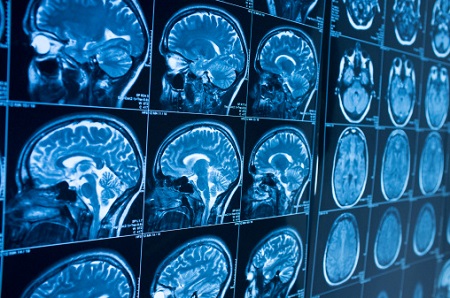Researchers reveal link between adolescent brain and origin of mental health problems
 Scientists who mapped the teenage brain have said changes in the brain's structure during adolescence could help to explain why the first symptoms of mental illness appear before adulthood.
Scientists who mapped the teenage brain have said changes in the brain's structure during adolescence could help to explain why the first symptoms of mental illness appear before adulthood.
The study, published in the Proceedings of the National Academy of Sciences, scientists from the University of Cambridge and University College London looked at the brains of almost 300 individuals aged 14-24 years-old.
Using magnetic resonance imaging (MRI), the scientists found that the cortex – the outer regions of the brain – thins during adolescence. However, at the same time, levels of myelin – the material which forms an insulating sheath around nerve fibres in the brain – increase within the cortex. Myelin facilitates effective communication between nerve fibres, which partly explains the development of the brain during this time period.
Although myelin has here been identified within the cortex, the brain’s ‘grey matter’, which is primarily associated with processing and cognition, it was previously thought to belong in mainly in ‘white matter’, brain tissue that coordinates communication between different regions of the brain. Researchers found that myelin not only exists within the cortex but increases during the teenage years, particularly in the ‘association cortical areas’, which act as connection hubs between different brain regions.
One of the study’s authors, Dr Kirstie Whitaker from the Department of Psychiatry at the University of Cambridge, said: “During our teenage years, our brains continue to develop. When we’re still children, these changes may be more dramatic, but in adolescence we see that the changes refine the detail. The hubs that connect different regions are becoming set in place as the most important connections strengthen. We believe this is where we are seeing myelin increasing in adolescence.”
The link to mental health issues was revealed when the researchers compared their MRI results with the Allen Brain Atlas, a database which maps gene expression patterns in the brain. They found that the brain regions in which genes linked to schizophrenia were most strongly expressed, or ‘switched on’, were the same regions that exhibited the greatest MRI changes during adolescence.
This process was explained by Professor Ed Bullmore, Head of Psychiatry at Cambridge: “Adolescence can be a difficult transitional period and it’s when we typically see the first signs of mental health disorders such as schizophrenia and depression. This study gives us a clue why this is the case: it’s during these teenage years that those brain regions that have the strongest link to the schizophrenia risk genes are developing most rapidly.
Delving further into the implications these findings have on our understanding of the development of mental illness, Professor Bullmore said: “As these regions are important hubs that control how regions of our brain communicate with each other, it shouldn’t be too surprising that when something goes wrong there, it will affect how smoothly our brains work.
“If one imagines these major hubs of the brain network to be like international airports in the airline network, then we can see that disrupting the development of brain hubs could have as big an impact on communication of information across the brain network as disruption of a major airport, like Heathrow, will have on flow of passenger traffic across the airline network.”
The study was funded by the Wellcome Trust. Dr Raliza Stoyanova, part of the Neuroscience and Mental Health team at the trust, said: “A number of mental health conditions first manifest during adolescence. Although we know that the adolescent brain undergoes dramatic structural changes, the precise nature of those changes and how they may be linked to disease is not understood.
“This study sheds much needed light on brain development in this crucial time period, and will hopefully spark further research in this area, and tell us more about the origins of serious mental health conditions such as schizophrenia.”
Comments
Write a Comment
Comment Submitted